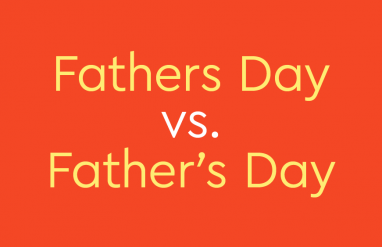When we write our sentences, we want them to be clear and informative so that everyone easily understands what we are trying to say. To that end, we can write a sentence like The tall clown, the one with the green shoes, is my little brother. This silly sentence includes an example of an especially useful bit of grammar: an appositive phrase. Appositives and appositive phrases allow us to gather and share additional details in our sentences so they are both more clear and exciting. Right now, let’s return the favor by discovering some information about appositives, our fact-finding friends.
What are appositives and appositive phrases?
An appositive is a noun or noun phrase that clarifies, identifies, describes, or otherwise renames another noun or noun phrase. For example, the sentence My cousin Rebecca is a doctor contains the appositive noun Rebecca. The appositive Rebecca identifies the noun cousin and both words refer to the same person. An appositive can also be a noun phrase as in the sentence That man, the one singing songs, is a jolly fellow.
The term appositive phrase is often used to refer to an appositive as well as all of its modifiers—adjectives, prepositional phrases, etc. In the sentence Ignacio, the cunning king of pirates, sailed the seven seas, the appositive would be the noun king whereas the appositive phrase is the cunning king of pirates.
Nouns/noun phrases and their appositives are said to be in apposition to each other. The act of using appositives in sentences is also referred to as apposition. Apposition is a fantastic grammatical tool as it allows us to make our sentences more clear and, often, more exciting.
Typically, an appositive phrase is placed right next to the noun/noun phrase that it modifies. In general, appositives usually come after their noun partners but it is possible to place an appositive first. The sentence A gallant knight, Sir Lancelot was beloved by all is an example of a sentence that places an appositive before a noun.
✏️ Examples
The following sentences show examples of how we can use appositives and appositive phrases:
- My hometown, Philadelphia, has many historical sites.
- The Roman emperor Augustus was a devious politician.
- Hand me the oldest book, the one with a yellow cover.
- Our neighboring country Canada is having a harsh winter this year.
Appositives vs. subjects and objects
One very important thing to note about appositives is that they do NOT act as subjects or objects in sentences. This is crucial to remember because the grammar of the sentence will depend on the subjects and objects, NOT appositives. For example:
- Bears (plural noun), Stephen Colbert’s biggest fear (singular appositive), were always at the top of his threat list.
In the above sentence, the verb were correctly agrees with the main subject bears, which is plural, and not the appositive fear, which is singular. While an appositive will often match its noun partner, you must be careful of tricky sentences like this one.
Restrictive vs. nonrestrictive appositives
When it comes to appositives, they can be referred to as restrictive or nonrestrictive. The difference between these two types of appositives is that a restrictive appositive provides essential information whereas a nonrestrictive appositive provides information that simply gives bonus details.
First, let’s look at an example of a nonrestrictive appositive:
- The company president, Mary M. Portant, made great decisions.
In this sentence, the appositive gives the name of the company president. However, the company only has one president, so we wouldn’t actually need their name to know who we are talking about. The meaning of this sentence would remain the same and it would still make sense even if the appositive was removed, which is a big hint that the appositive is nonrestrictive.
See how commas are used with conjunctions.
Now, let’s look at an example of a restrictive appositive:
- My friends Jeff and Emily are the only ones who are left-handed.
In this sentence, the appositive Jeff and Emily identifies specifically which of our many friends we are talking about. Without this appositive, we couldn’t express the point we are trying to make. Additionally, removing the appositive turns the sentence into My friends are the only ones who are left-handed, which is a confusing and nonsensical sentence. So, it is clear that this appositive is a restrictive appositive because we need it for our sentence to make sense.
So far, so good. However, things are about to get tricky. You see, it is possible that the same appositive in the same exact sentence could be either restrictive or nonrestrictive. Look at the following two sentences:
- My cat, Pickles, likes to chase birds.
- My cat Pickles likes to chase birds.
You’ll notice that these sentences are identical besides the use of commas—we’ll get to those in just a second. However, the first sentence has a nonrestrictive appositive while the second has a restrictive one. To help figure out what is going on, let’s add another sentence to each:
- I have a funny cat. My cat, Pickles, likes to chase birds.
- I have three cats and two dogs. My cat Pickles likes to chase birds.
Using this additional context, we can solve the mystery. In the first sentence, it is clear that you only own one cat and so we don’t need to know her name to identify her; her name is just a bit of bonus info. In the second sentence, we need to know Pickles’s name so we can figure out specifically which pet you are talking about; her name is essential to say what you want to say.
Often, we need additional context like this to know if an appositive is restrictive or nonrestrictive. Sometimes, you will need to look outside the sentence itself to know what kind of appositive you are dealing with. Now, you might be asking why we care if an appositive is restrictive or nonrestrictive …
Punctuation of appositives
As it turns out, restrictive and nonrestrictive appositives require different punctuation in sentences, which you may have noticed by the appearance of our frenemy the comma in our examples. Here is the main difference when it comes to appositive punctuation:
- Restrictive appositives don’t use any additional punctuation.
- Nonrestrictive appositives are separated out using commas or parentheses.
For example:
- Restrictive: The famous detective Sherlock Holmes solved many cases.
- Nonrestrictive: The anteaters were looking for ants, their favorite snack.
While nonrestrictive appositives typically use commas, especially in formal writing, we can also use parentheses to set them apart from the sentence:
- The anteaters were looking for ants (their favorite snack).
In a manner of speaking, the commas/parentheses tell us that a nonrestrictive appositive could be removed from the sentence entirely without changing anything. Still, it is nice to have these appositives around for a little extra information.
Examples
Let’s look at different ways that we punctuate appositives in sentences. Remember that restrictive appositives don’t need punctuation while nonrestrictive appositives do.
- My uncle Patrick likes to go fishing on the weekends.
- My oldest sister, Jessica, works at a hospital.
- The legendary ninja Hanzo Hattori has become a pop culture icon.
- Teddy Roosevelt (America’s 26th president) was an avid hunter.
Test yourself!
Before we finish things up, let’s test your knowledge of appositives. Read each of the following sentences, and see if you can tell how each one should be properly punctuated. Remember, the key is to identify if an appositive is restrictive or nonrestrictive. Note: you may need to read the sentence carefully to figure out the context that reveals what type of appositive you are looking at.
- The capital city of the United Kingdom London is very old.
- The classic film The Wizard of Oz is my favorite movie.
- I have many brothers and sisters, but my sister Alex is the only one who is allergic to peanuts.
Write without errors
Improve your writing with Thesaurus.com’s Grammar Coach™, which catches grammar and spelling errors and provides Thesaurus-powered synonym suggestions. Using machine learning, this tool can definitely spot the difference between your singular and plural collective nouns—and more!
Whether you’re writing about a person, place, or thing, perfect grammar has never been easier!
Answers: 1. Nonrestrictive. Needs commas/parentheses. 2. Restrictive. Doesn’t need punctuation. 3. Restrictive. No punctuation. Context tells us that we need Alex’s name to know specifically who we are talking about.















